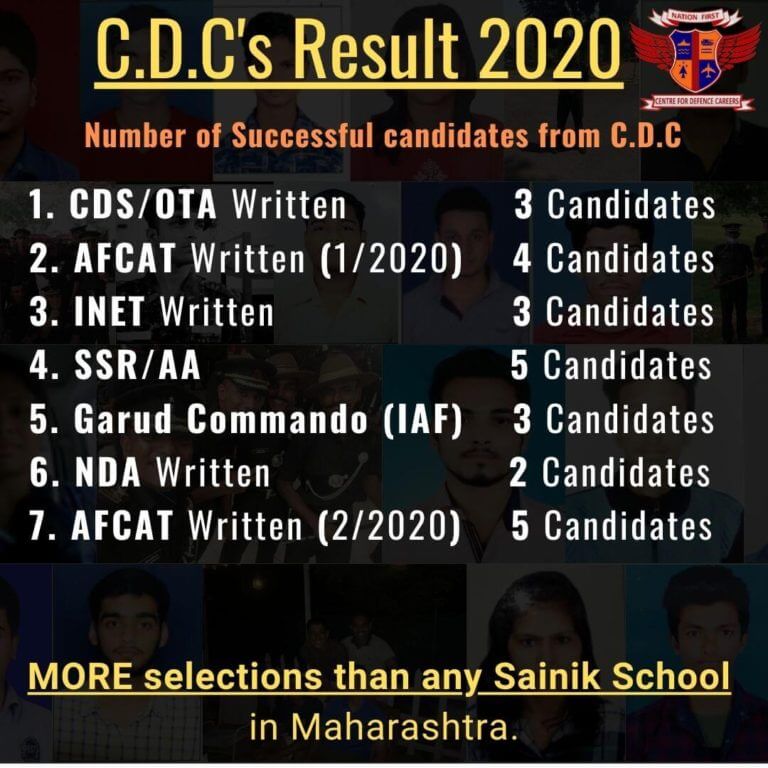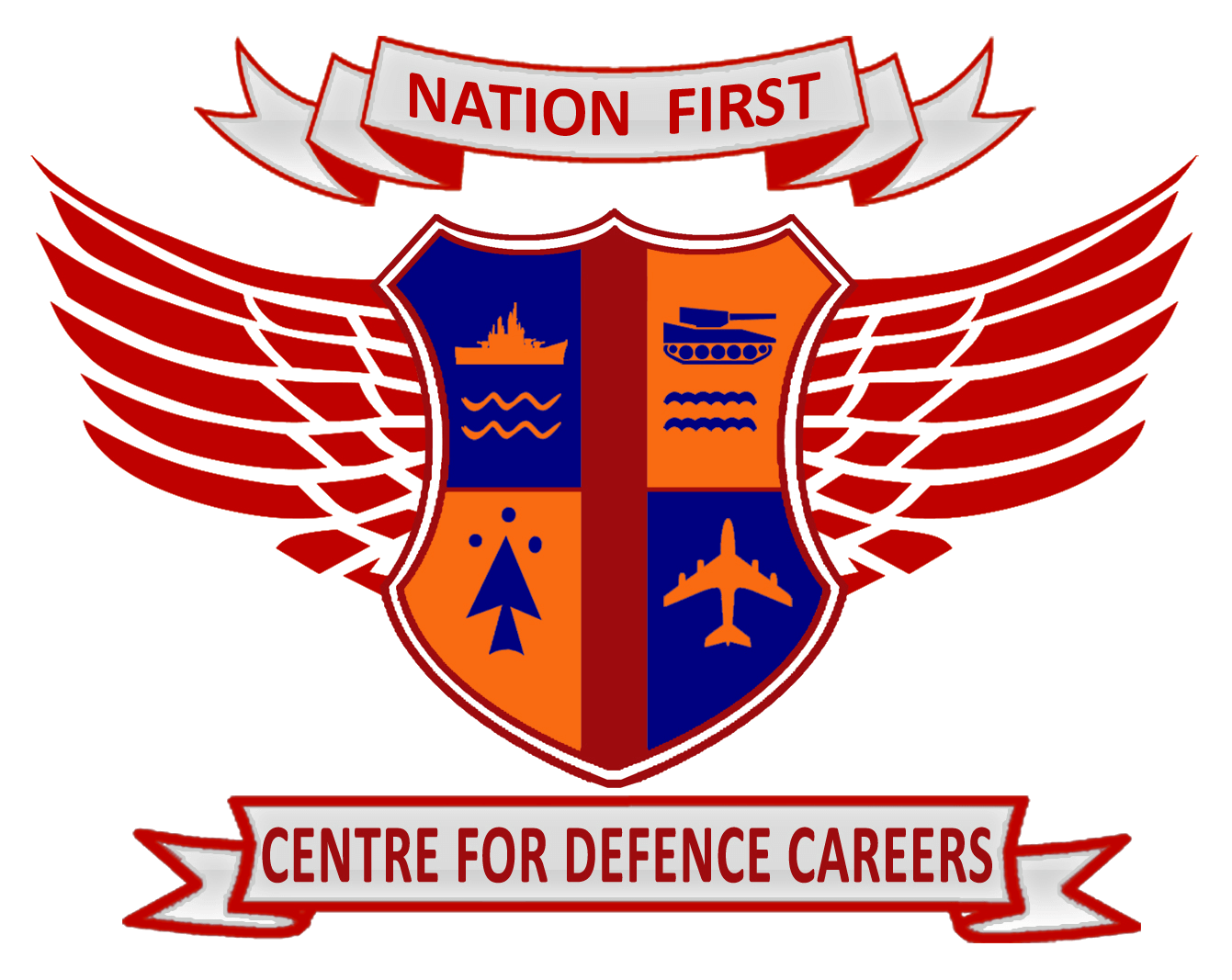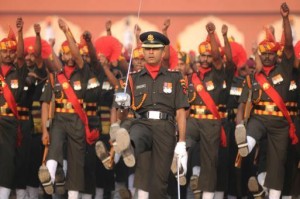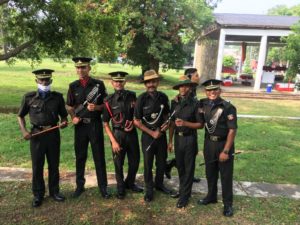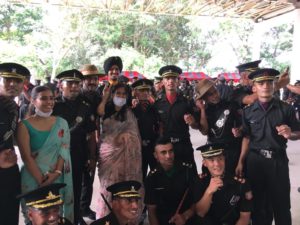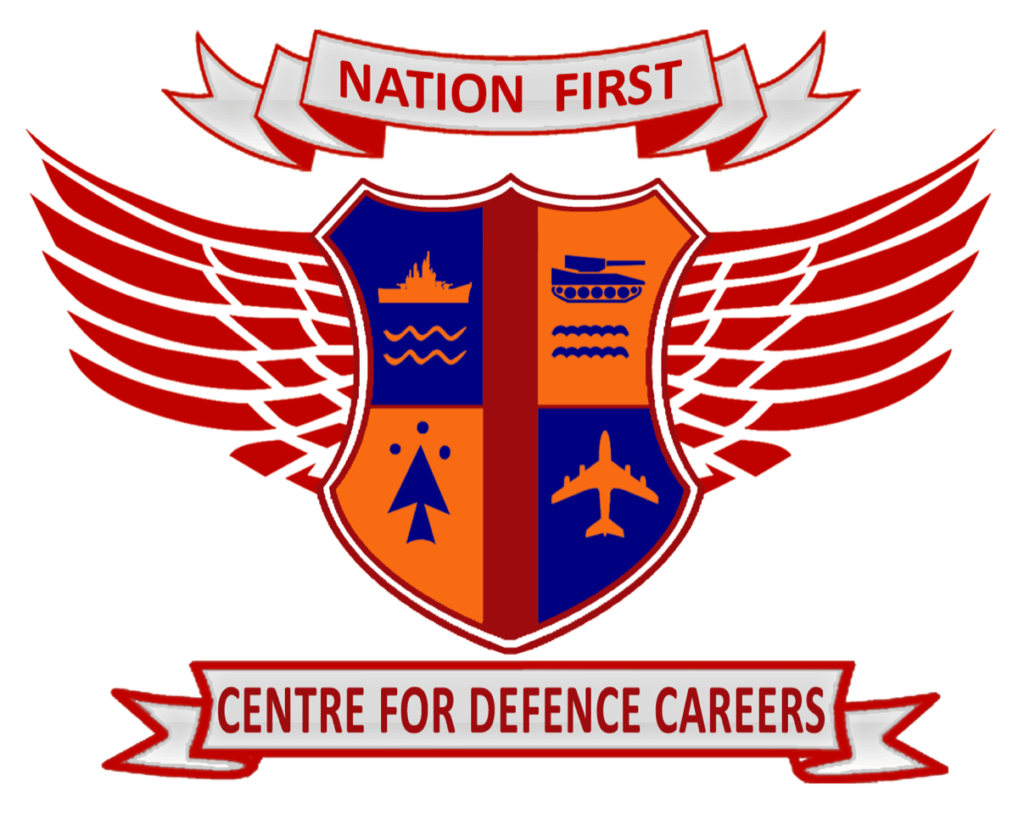Have some Queries
regarding any Defence Exam?
FREE Telephonic Counselling
Request a Call Back

Guidelines with regard to Physical & Medical Standards for CDS Candidates.
Note-I : CANDIDATES MUST BE PHYSICALLY FIT ACCORDING TO THE PRESCRIBED PHYSICAL STANDARDS. THE STANDARDS OF MEDICAL FITNESS AND THE GUIDELINES FOR THE SAME ARE GIVEN BELOW :
A NUMBER OF QUALIFIED CANDIDATES ARE REJECTED SUBSEQUENTLY ON MEDICAL GROUNDS. CANDIDATES ARE, THEREFORE, ADVISED IN THEIR OWN INTEREST TO GET THEMSELVES MEDICALLY EXAMINED BEFORE SUBMITTING THEIR APPLICATIONS TO AVOID DISAPPOINTMENT AT THE FINAL STAGE.
Note-II: Permanent body tattoos are only permitted on inner face of forearm i.e from inside of elbow to the wrist and on the reverse side of palm/back (dorsal) side of hand. Permanent body tattoos on any other part of the body are not acceptable and candidates will be barred from further selection. Tribes with tattoo marks on the face or body as per their existing custom and traditions will be permitted on a case to case basis.
1. A candidate recommended by the Services Selection Board will undergo a medical examination by a Board of Service Medical Officers. Women candidates will undergo Medical Examination by a Medical Board comprising male/female doctors/specialists/Gyanaeocologist. There will be a Lady Medical Officer as Member of Board.Only those candidates will be admitted to the Academy who are declared fit by the Medical Board. However, the candidates declared unfit will be intimated by the President of the Medical Board and procedure for request for an Appeal Medical Board (AMB) will also be intimated to the candidate.
Candidates who are unfit may apply for Appeal Medical Board (AMB) to be completed within 42 days of SMB and may request for Review Medical Board (RMB) within one day of completion of Appeal Medical Board. Candidates declared unfit by AMB will be intimated by the President AMB about procedure of challenging the findings of AMB. The candidates will also be intimated that holding Review Medical Board (RMB) will be granted at the discretion of DGAFMS based on the merit of the case and that RMB is not a matter of right. The candidate should address the request for RMB if he/she so desires to DG Rtg. (CDSE) Army HQ., West Block-III, R.K. Puram, New Delhi-110066 and DMS(MB)/DGMS (Air), Air HQ, R.K. Puram in case of AF candidates and a copy of the same is handed over to the President of AMB. The O/o the DGAFMS will inform the date and place (Delhi and Pune only) where the candidate will appear for a RMB. The candidate must be physically fit according to the prescribed physical standards which are summarized below:
(a) The candidate must be in good physical and mental health and free from any disease/disability which is likely to interfere with the efficient performance of duties.
(b) There should be no evidence of weak constitution, bodily defects or over weight.
(c) The minimum acceptable height for male condidates is 157.5 cms. (157 cms for Navy and 162.5 cms for Air Force). For Women candidates minimum acceptable height is 152 cms. For Gorkhas and individuals belonging to hills of North-Eastern region of India, Garhwali and Kumaon, the Minimum acceptable height will be 5 cms less. In case of candidates from Lakshadweep, the minimum acceptable height can be reduced by 2 cms.
These concessions are not applicable for Navy and Air Force. Height and Weight standards are given below for Army and Navy only. Interpolation for weights against height not mentioned may be done.
Height and Weight Standards (Males).
| Height in Centimetres (Without shoes) | Weight in Kgs | Weight in Kgs | Weight in Kgs |
| 18 years | 20 years | 22 years | |
| 152 | 44 | 46 | 47 |
| 155 | 46 | 48 | 49 |
| 157 | 47 | 49 | 50 |
| 160 | 48 | 50 | 51 |
| 162 | 50 | 52 | 53 |
| 165 | 52 | 53 | 55 |
| 168 | 53 | 55 | 57 |
| 170 | 55 | 57 | 58 |
| 173 | 57 | 59 | 60 |
| 175 | 59 | 61 | 62 |
| 178 | 61 | 62 | 63 |
| 180 | 63 | 64 | 65 |
| 183 | 65 | 67 | 67 |
| 185 | 67 | 69 | 70 |
| 188 | 70 | 71 | 72 |
| 190 | 72 | 73 | 74 |
| 193 | 74 | 76 | 77 |
| 195 | 77 | 78 | 79 |
A ± 10% (for Navy) departure from the average weight given in the Table above is to be considered within normal limit. However, in individuals with heavy bones and broad built as well as individuals with thin built but otherwise healthy this may be relaxed to some extent on merit.
Height and Weight Standards (Females)
| Height in Centimetres (Without shoes) | Weight in Kgs. | Weight in Kgs. | Weight in Kgs. |
| 20 years | 25 years | 30 years | |
| 148 | 39 | 41 | 43 |
| 150 | 40 | 42 | 43.5 |
| 153 | 42 | 43.5 | 45 |
| 155 | 43 | 44 | 46 |
| 158 | 45 | 46 | 48 |
| 160 | 46 | 47 | 49 |
| 163 | 47 | 49 | 51 |
| 165 | 49 | 51 | 53 |
| 168 | 50 | 52 | 54 |
The acceptable weight for Air Force candidates will be ± 10% of the average weight given below:—
MALE IDEAL WEIGHTS IN KG FOR DIFFERENT AGE GROUPS AND HEIGHTS
FOR FAT % (<20) OF NORMAL INDIVIDUALS FOR AIR FORCE
| Ht. in mm | Age Range 15-17 | Age Range 18-22 | Age Range 23-27 | Age Range 28-32 | Age Range 33-37 | Age Range 38-42 | Age Range 43-47 | Age Range >48 |
| 1520 | 46 | 47 | 50 | 54 | 54 | 54 | 55 | 54 |
| 1530 | 47 | 47 | 51 | 55 | 55 | 54 | 56 | 54 |
| 1540 | 47 | 48 | 51 | 56 | 55 | 55 | 57 | 55 |
| 1550 | 48 | 49 | 52 | 56 | 56 | 56 | 57 | 56 |
| 1560 | 48 | 49 | 53 | 57 | 56 | 56 | 57 | 56 |
| 1570 | 49 | 50 | 54 | 58 | 57 | 56 | 58 | 56 |
| 1580 | 49 | 50 | 54 | 58 | 58 | 57 | 58 | 57 |
| 1590 | 50 | 51 | 55 | 59 | 58 | 58 | 59 | 58 |
| 1600 | 51 | 52 | 56 | 59 | 59 | 59 | 60 | 58 |
| 1610 | 51 | 52 | ||||||
| 1620 | 52 | 53 | ||||||
| 1630 | 52 | 54 | ||||||
| 1640 | 53 | 54 | ||||||
| 1650 | 53 | 55 | ||||||
| 1660 | 54 | 56 | 60 | |||||
| 1670 | ||||||||
| 1680 | ||||||||
| 1690 | ||||||||
| 1700 | ||||||||
| 1710 | ||||||||
| 1720 | ||||||||
| 1730 | ||||||||
| 1740 | ||||||||
| 1750 | ||||||||
| 1760 | ||||||||
| 1770 | ||||||||
| 1780 | ||||||||
| 1790 | ||||||||
(d) In your own interest you are advised to undergo a preliminary medical check up for wax in ears, refractory error of eyes, fungal infection of skin etc. before reporting for the SSB interview.
(e) Chest should be well developed. The minimum range of expansion after full inspiration should be 5 cms. The measurement will be taken with a tape so adjusted that its lower edge should touch the nipple in front and the upper part of the tape should touch the lower angle of the shoulder blades behind. X-Ray of the chest is compulsory and will be taken to rule out any disease of the chest.
(f) There should be no disease of bones and joints of the body.
(g) A candidate should have no past history of mental breakdown or fits.
(h) The hearing should be normal. A candidate should be able to hear a forced whisper with each ear at a distance of 610 cms. in a quiet room. There should be no evidence of present or past disease of the ear, nose and throat.
(i) There should be no sign of functional or organic disease of the heart and blood vessel. Blood pressure should be normal and candidates be free from AIDS.
(j) The muscles of abdomen should be well developed and there should be no enlargement of liver or spleen. Any evidence of disease of internal organs of the abdomen will be a cause for rejection.
(k) Inguinal Hernia – Inguinal Hernia (Un-operated) will be a cause for rejection. Those who have been operated for hernia may be declared medically fit, provided:-
(i) One year has elapsed since operation, documentary proof to this aspect is to be produced by the candidate.
(ii) General tone of the abdominal musculature is good.
(iii) Surgical scar is well healed healthily without any gaping.
(iv) There has been no recurrence to hernia or complication connected with the operation.
(l) There should be no hydrocele, varicocele or piles.
(m) Urine examination will be done and any abnormality, if detected will be a cause for rejection.
(n) Any disease of the skin which is likely to cause disability or disfigurement will also be a cause for rejection.
(o) For a male candidates the minimum acceptable visual acuity are distant Vision (corrected) better eye 6/6 and worse eye 6/18. (For Air Force without glasses only) Myopia of not more than minus 3.5 D and Manifest hypermetropia of not more than plus 3.5 D including Astigmatism. For women candidates the minimum acceptable visual acuity are distant Vision (corrected) better eye 6/6, worse 6/18, Myopia of not more than minus 5.5 D including Astigmatism. Manifest hypermetropia of not more than plus 3.5 D including astigmatism. Internal examination of the eye will be done by means of ophthalmoscope to rule out any disease of the eye. A candidate must have good binocular vision. The colour vision standard will be CP-II for Army. A candidate should be able to recognise red and green colours.
(p) Visual Standards for Navy
(a) Uncorrected without glass 6/12 (b) Corrected with glass 6/6
(c) Limits of Myopia -1.5
(d) Limits of Hypermetropia +1.5 (e) Binocular vision III (f) Limits of Colour Perception I
(q) For women candidates if pregnancy is detected at any stage after selection at SSB or during training will debar the candidates from grant of commission and cost recovered from the date of joining OTA till the date of debar on confirmation of pregnancy from Military Hospital Authorities.
RADIAL KERATOTOMY and LASER SURGERY: Candidates who have undergone or have the evidence of having undergone Radial Keratotomy to improve the visual acuity, will be permanently rejected for all the three services.
In order to detect PRK/LASIK all the candidates at SMB will be subjected to the measurement of Axial length by A-Scan biometer.
Candidates who have undergone LASER Surgery for correction of refractive error will be considered for commission in Army if they fulfill following criteria:—
(i) Age more than 20 years.
(ii) Uncomplicated stable LASIK/Excimer (PRK) laser procedure done for Myopia or Hypermetropia, with stable refraction for a period of six months after the procedure.
(iii) A healthy retina.
(iv) Corrected vision should be 6/6 in better eye and 6/9 in worse eye,
with maximum residual refraction of + 1.50 in any meridian for myopia or hypermetropia.
(v) Axial length within permissible limits.
NOTES : The candidates will be asked to declare at the time of medical examination that he/she has undergone LASER procedure as above. He/she will be subjected to a thorough corneal and retinal evaluation by the ophthalmologist. However he/she will be declared unfit at the SMB and those found to be within the acceptable limits for approval as above will be advised to undergo an Appeal Medical Board. During AMB he/she will be subjected to a thorough corneal and retinal evaluation as also scrutiny of the records by a Senior Adviser in Ophthalmology.
(r) The candidates should have sufficient number of natural and sound teeth. A minimum of 14 dental points will be acceptable. When 32 teeth are present, the total dental points are 22. A candidate should not be suffering from severe pyorrhoea.
(s) X-Ray examination of the chest will include the lower part of cervical spine for presence of cervical ribs. X-Ray examination of other parts of spine will be taken if the SMB considers it necessary.
(t) Carrying angle of elbow should not be more than 15° and 18° among males and females respectively.
2. In addition to the above, the following medical standards will be applicable in respect of Air Force candidates only:
(a) Anthropometric measurements acceptable for Air Force are as follows :
Height
Leg Length Thigh Length Sitting Height
162.5 cms.
Min. 99 cms. & Max. 120 cms. Max. 64 cms.
Min. 81.5 cms. & Max. 96 cms. (b) X-ray of Chest is compulsory.
(c) Visual Standards for Air Force :
Candidates who habitually wear spectacles are not eligible for Air Force. Minimum distant vision 6/6 in one eye and 6/9 in other correctable to 6/6 only for
Hypermetropia Colour vision CP-1
Hypermetropia : Manifest Myopia : Retinoscopic Myopia :
+2.0 d Sph Nil
–0.5 in any meridian permitted
32
Astigmatism
Maddox Rod Test (i) at 6 meters—
(ii) at 33 cms—
: +0.75 D Cyl (with + 2.0 D- Max)
Exo-6 prism D Eso-6 prism D Hyper-1 prism D Hypo-1prism D Exo-16 prism D Eso-6 prism D Hyper-1 prism D Hypo-1 prism D
Hand held Stereoscope—All of BSV Grades
Convergence—up to 10 cm
(i) Refractive Surgery : Candidates who have undergone PRK (Photo Refractive Kerotatomy/Lasik (LASER in Situ Keratomileusis) may be considered fit for commissioning in the Air Force in all branches.
(ii) Post PRK/LASIK candidates must meet the visual requirements required for the branch as laid down in para 3.12.5.2.
(iii) The following criteria must be satisfied prior to selecting post- PRK/LASIK at the time of Air Force Medical Examination :-
(aa) PRK/LASIK surgery should not have been carried out before the age of 20 years.
(ab) The axial length of the eye should not be more than 25.5 mm as measured by IOL master.
(ac) At least 12 months should have elapsed post uncomplicated stable PRK/LASIK with no history or evidence of any complication.
(ad) The post PRK/LASIK corneal thickness as measured by a corneal pachymeter should not be less than 450 microns.
(ae) Individual with high refractive errors (>6D) prior to PRK/LASIK are to be excluded.
(af) Radial keratotomy (RK) and Photo Refractive Keratotomy (PRK) surgery for correction of refractive errors is not permitted for any Air Force duties. Candidates having undergone cataract surgery with or without IOL implants will also be declared unfit.
Binocular Vision—Must possess good binocular vision (fusion and stereopsis with good amplitude and depth).
Candidates who have undergone LASIK surgery are not considered fit for permanent commission in flying branch in IAF.
(d) Hearing Standards :
(i) Speech test : Whispered hearing 610 cms. each ear.
33
(ii) Audiometric Test :Audiometric loss should not exceed +20 db in frequencies between 250 Hz and 8000 Hz.
(e) Routine ECG should be within normal limits.
3. The following conditions detected on X-ray examination will be disqualifying for entry to Army and Navy:
(a) Granulomatous disease of spine.
(b) Arthritis/Spondylosis
(c) Scoliosis more than 10o degree as measured by Cobb’s Method.
(d) More than mild Kyphosis/Lordosis.
(e) Spondylolisthesis/Spondylosis.
(f) Herniated nucleus pulposes.
(g) Compression fracture of Vertebra.
(h) Sacralisation Disease.
(i) Cervical ribs with demonstrable neurological or Circulatory deficit.
(j) Presence of Schmorl’s node at more than one level.
(k) Atlanto-occipital and atlanto-axial anomalies.
(l) Incomplete Sacralisation Unilateral or Bilateral.
(m) Spinabifida other than SV 1 and LV 5.
(n) Any other abnormality, if so considered by specialist.
Spinal Conditions for Air Force
Past medical history of diseases or injury of the spine or sacriliac joints, either with or without objective signs which have prevented the candidate from successfully following a physically active life, is a case for rejection for commissioning in IAF. History of spinal fracture/prolapsed intervertebral disc and surgical treatment for these conditions will entail rejection. The following conditions detected during medical exam will disqualify a candidate for Air Force service.
(a) Granulomatous disease of spine (b) Arthritis/Spondylosis
(i) Rheumatoid arthritis and allied disorders
(ii) Ankylosing spondylitis
(iii) Osteoarthrosis, spondylosis and degenerative joint diseases
(iv) Non articular rheumatism (e.g. lesions of the rotator cuff, tennis elbow, recurrent lumbago etc.)
(v) Miscellaneous disorders including SLE, dermatomyositis, polymyositis, vasculitis.
(c) Spondylolisthesis/spondylolysis/spondylosis
(d) Compression fracture of vertebrae
(e) Scheurman’s disease (Adolescent kyphosis)
(f) Loss of cervical lordosis when associated with clinically restricted movements of cervical spine.
(g) Unilateral/bilateral cervical ribs with demonstrable neurological or circulatroy deficit.
(h) Scoliosis more than 15 degree as measured by Cobb’s method.
(i) Degenerative Disc Disease.
(j) Presence of schmorl’s nodes at more than one level.
(k) Atlanto—occipital and atlanto-axial anomalies.
(l) Hemi vertebrae and/or incomplete block (fused) vertebrae at any level in cervical, dorsal or lumbar spine and complete block (fused) vertebrae at more than one level in cervical or dorsal spine.
(m) Unilateral Sacralisation or lumbarisation (Complete or incomplete) at all levels and bilateral incomplete sacralisation or lumbarisation.
(n) Any other abnormality if so considered by the specialist.
4. The Medical standards for candidates of Naval Aviation Branch will be the same as for flying duties of Air Force except limit of myopia is -0.75 D and limits of hypermetropia is +1.5D
5. Detection of any disability in the course of a special test carried out prescribed for one service, may render the candidate unfit for any other service(s), if so considered as disqualifying by Medical Board.
6. Physical Conditioning : Prospective candidates are advised to keep themselves in good physical condition by following the under mentioned routine :—
(a) Running : 2 to 4 Km. in 15 minutes
(b) Skipping
(c) Pushups & Sit-ups : Minimum 20 each
(d) Chin ups : Minimum 08
(e) Rope Climbing : 3 to 4 metres.
OTHER COURSES OFFERED BY C.D.C
Have some Queries
regarding any Defence Exam?
FREE Telephonic Counselling
Request a Call Back
MORE SELECTIONS THAN ANY SAINIK SCHOOL IN MAHARASHTRA
